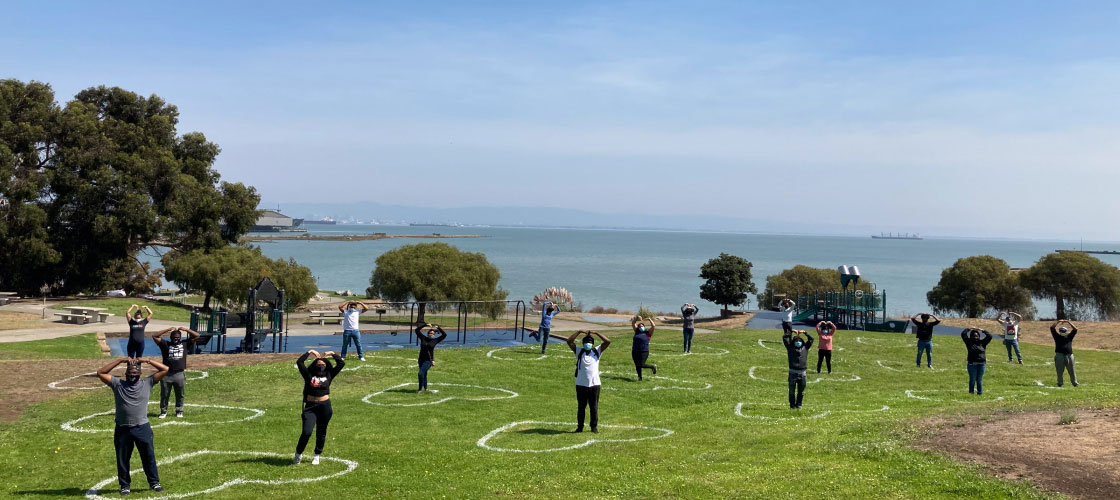
Building Your Group
It’s impossible to do it all alone! As you meet like-minded neighbors and encourage them to get involved with your group, you’ll build a dependable base of supporters, volunteers and partners who you can lean on throughout the project.
Starting a community group remains one of the most effective mechanisms for neighbors to transform a derelict parcel or an underutilized public space. Over time, community groups become strong allies for promoting and transforming space of any size and scale, while also building neighborhood pride and community ties.
We’ve laid out the following steps, with associated questions, to help you build a plan and think through the next steps for your group:
Create a vision and mission for your community organization
- What is the purpose of your group?
- How can you, realistically, translate this mission and purpose into action?
- How will you ensure that your group reflects a diverse range of ages and cultures, representing the communities that it will serve?
- A mission statement should be simple, clear and capable of inspiring people to take action
- Write bylaws defining rules and principles that will help self-regulate your group and guide you to achieving your mission
Decide how you want your community group to operate
- Do you want a voting membership?
- Do you want to form a steering committee and/or advisory board? If yes, be sure to recruit members with a wide variety of interests, skills and contacts. Then consider: what will you expect of people who serve in this capacity?
- Do you want to raise funds?
- What type of activities will the group support or initiate?
- Will you have a board of directors?
Discuss needed duties to move project forward and recruit volunteers to share the work.
- Goals are general statements about what you hope to accomplish as a group
- Objectives are specific statements about how you plan to do accomplish your goals
- Be bold in your vision, but realistic with your actionable steps
- Revisit plans regularly. Be ready and willing to adapt or change them as needed.
- Consider creating a Facebook page, newsletter, website and logo to keep folks engaged
Building Community Engagement: 10 Steps for Rallying Your Neighbors
- Don’t do it alone! Find a neighbor or establish a core team.
- Spread the word through a variety of methods: Creating flyers, hanging posters on site, going door to door, word of mouth and NextDoor are all great ways to do this.
- Bring folks together by holding a community clean up or a community meeting. Be sure to time the meeting to fit people’s work schedules.
- Set an agenda so you stay on track.
- Always have a sign-in sheet on hand to collect emails and phone numbers. You’ll need this contact information to gather input and help as your project progresses.
- Plan to take notes, this helps you remember discussion items and plan for next steps. Sharing them afterwards with participants also keeps them engaged.
- Encourage folks to share their vision for the site through a survey, visioning exercise or share out.
- Discuss needed duties to move the project forward and recruit volunteers to share the workload.
- Set another meeting date before folks disband.
- Send a follow-up thank you email, confirm the next meeting date and encourage folks to bring someone with them to the next meeting. You can share the meeting notes at this time too!
501c3 or Fiscal Sponsor?
Next you need to decide if you want to create a nonprofit 501c3 organization that can receive tax-deductible contributions, or if it’s more appropriate to find a Fiscal Sponsor (e.g. SF Parks Alliance) for your group.
If you form your own 501(c)3
- File articles of incorporation
- File for an IRS determination of federal tax exempt status
- Determine local and state requirements for your activities
- Establish a bookkeeping system
- Find an insurance agent
If you work with a fiscal sponsor
You will team up with an established non-profit (your sponsor) to accomplish your vision.
A fiscal sponsor is a tax-exempt entity that provides your project with administrative, accounting, fundraising, insurance and legal services, freeing you from having to spend dedicated time on these tasks so you can focus on what matters most - your project!
Most fiscal sponsors provide training to develop abilities, skills and knowledge.
Routes to securing 501c3 status
Teaming up with a sponsor can enable your project to solicit tax-deductible donations from the public without having to be separately recognized as tax-exempt by the IRS. In return, your sponsor receives a fee for its services - typically a percentage of the funds collected on your project’s behalf (anywhere from 5% to 15% are common percentages).
Pros
If you don’t know much about running a nonprofit and don’t want to go through the time and trouble to learn, the comprehensive fiscal sponsorship model can be a great option. Fiscal sponsorship enables you to have an experienced nonprofit help you deal with all of the nuts and bolts, while you get to focus on fundraising and completing your actual project.
Cons
You are not your own separate entity, and must adhere to the guidelines set forth by your fiscal sponsor.
Legally, the funds you raise are under the control of the fiscally sponsoring organization and the organization has the right to achieve the project goals if the project leaders are not getting the job done.
The fiscal sponsor is accepting a high degree of liability, responsibility and risk to its reputation, and can exercise a fair degree of control over the finances and activities of the sponsored project.
The SF Parks Alliance fiscally-sponsors nearly 100 community groups throughout San Francisco. Check out the full list here.
For more questions on fiscal sponsorship with SF Parks Alliance, connect with the Area Manager associated with your site’s region. Contact details can be found here.
